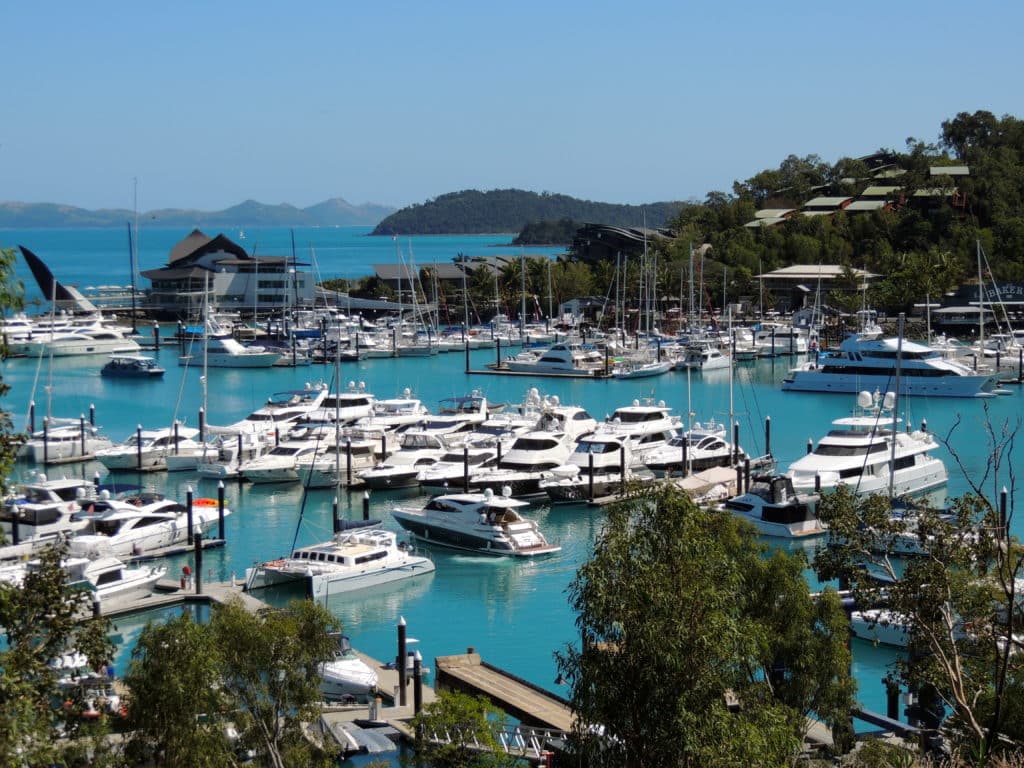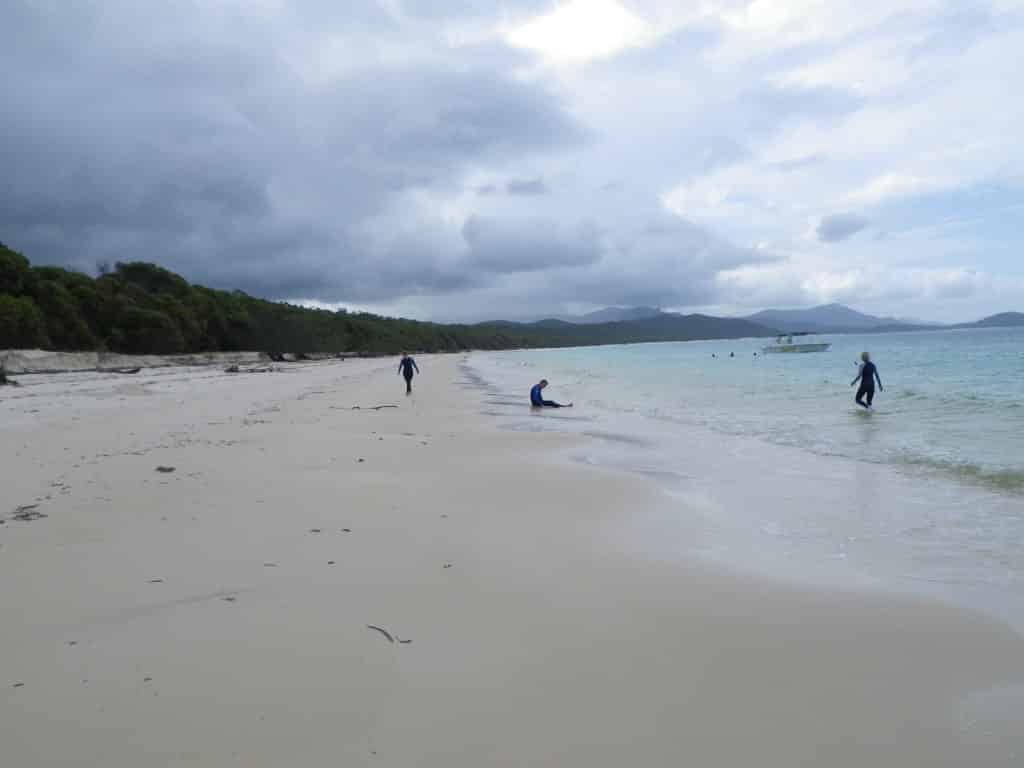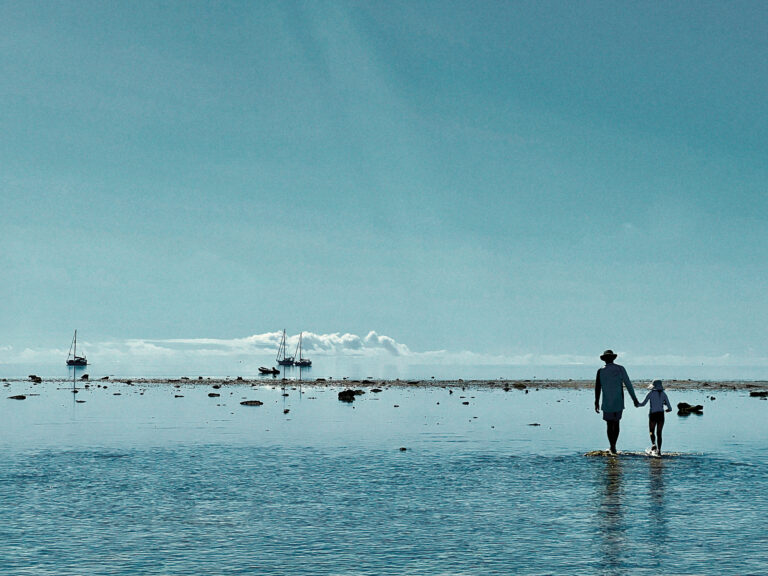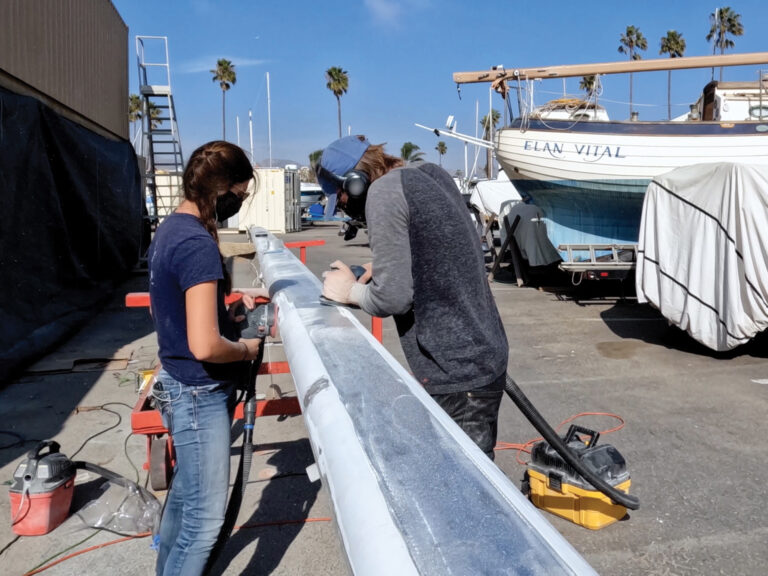
Pristine white sand beaches begging for footprints; the Great Barrier Reef Marine Park just waiting to be snorkeled; and our charter catamaran tugging on her mooring lines, ready to set sail. Who could resist such a tempting welcome from the Whitsunday Islands? Not us.
Before we could play, we had some preparations to do. At the Abell Point Marina in Airlie Beach, we finalized the paperwork to charter a Fountaine Pajot Athena 38 catamaran. At the marina’s dive shop, we rented snorkeling gear for the family and thin neoprene “stinger” suits to protect us from jellyfish. We bought groceries in the nearby town, and we passed the charter company’s written and practical tests.
Whitsundays, Here We Come!
We eagerly set a beam-reach course to Langford Island and its sand spit, aptly named One Foot Island. Both are located off Hook Island. With 20 knots from the southeast, we arrived in less than two hours. Fifteen minutes after mooring, we were snorkeling with stingrays. We motored to nearby Stonehaven Anchorage for the night; it offered better protection from the prevailing wind.
Cave Drawings
The next morning, we sailed south to Nara Inlet, a protected bay that is reputed to be a spawning ground for hammerheads. That was OK; we didn’t sail there to swim. Instead we dinghied ashore and bush-walked to the aboriginal caves at the Ngaro Cultural Site. The short but initially steep path leads to a viewing platform outside the once-hidden rock shelter. Archaeologists believe that the seafaring Ngaro people first settled this area more than 9,000 years ago. Their fragile art motifs adorn the stone walls here.
Sea Life
Butterfly Bay was Tuesday’s destination, so we sailed north through the pass between Hook Island and Hayman Island. Suddenly I spotted a plume of water: humpback whales! Between June and September, whales visit and give birth to their calves in the Whitsundays. We dived off the boat at Maureen’s Cove to go snorkeling. Beautiful, colorful coral and tons of tropical reef fish swayed and darted in the turquoise water. Even our hesitant 6-year-old donned his snorkeling gear and bravely put his face into the water, hanging on to my shoulder and enthusiastically pointing at the fish.
Picture Perfect
A couple of turtles poked their heads out of the water as we dropped the hook at Tongue Bay the next morning. We dinghied ashore and followed a well-worn path up the hill to a viewing platform that overlooks spectacular Hill Inlet and famous Whitehaven Beach. After taking photos, we walked across Tongue Point to Lookout Beach for a picnic dinner. The next day, we anchored off Whitehaven Beach, building castles in the powdered-sugar sand and swimming.
On the last day of our charter, we sailed to Hamilton Island. The lack of cars on the island gave the place a perpetual holiday feel that made leaving even harder.
Will we go back? Of course. We still have 70 islands and their beaches to explore and an ocean of coral reefs that need to be snorkeled.

What to know if you go
Best time of year: May to November, with August to November being the driest months. Tropical cyclones may occur December to April, and the risk of jellyfish is higher from November to May. Average air temperature during this time is 68 to 79 degrees F.
Winds: Southeast and east winds dominate, typically 14 to 17 knots from May to November. The outer Great Barrier Reef provides protection from ocean swells, giving typically pleasant sailing conditions within the Whitsunday Islands.
Sailing Level: Skills required are beginner to intermediate. Breeze is generally dependable and moderate, while piloting is simple and straightforward. Sailing time between most anchorages is less than two hours.
Writer and mother Kelly Watts is the author of Sailing to Jessica.








